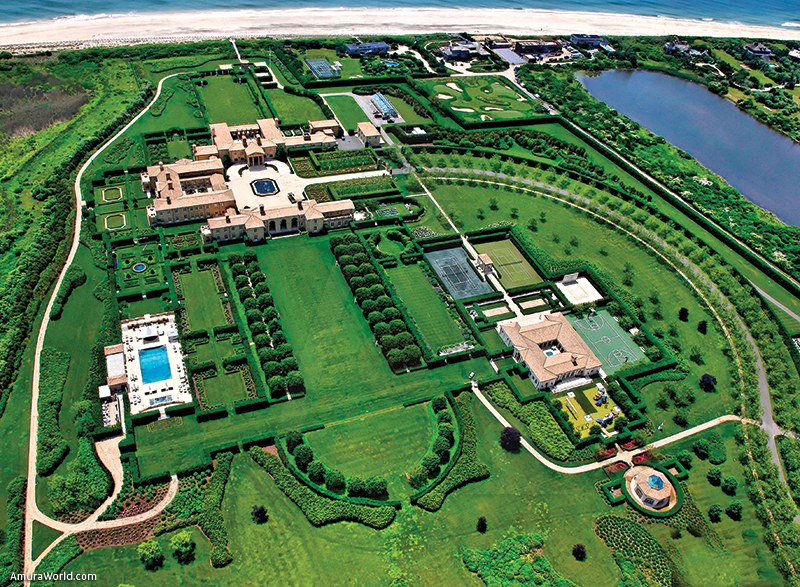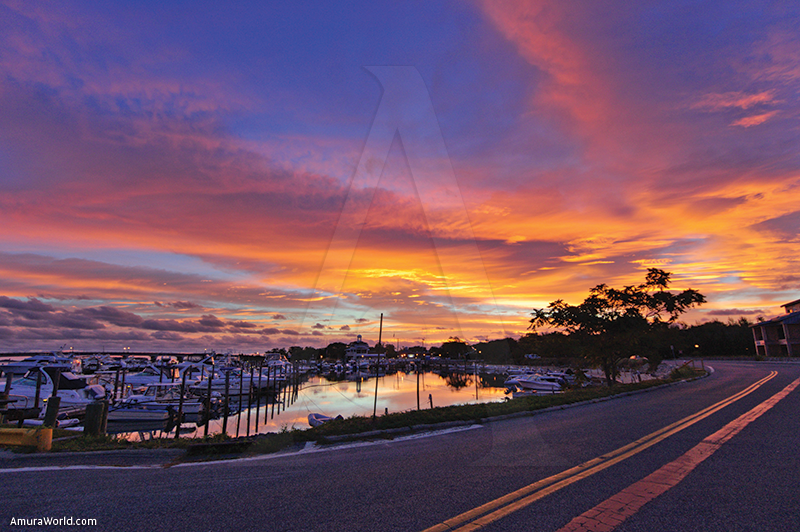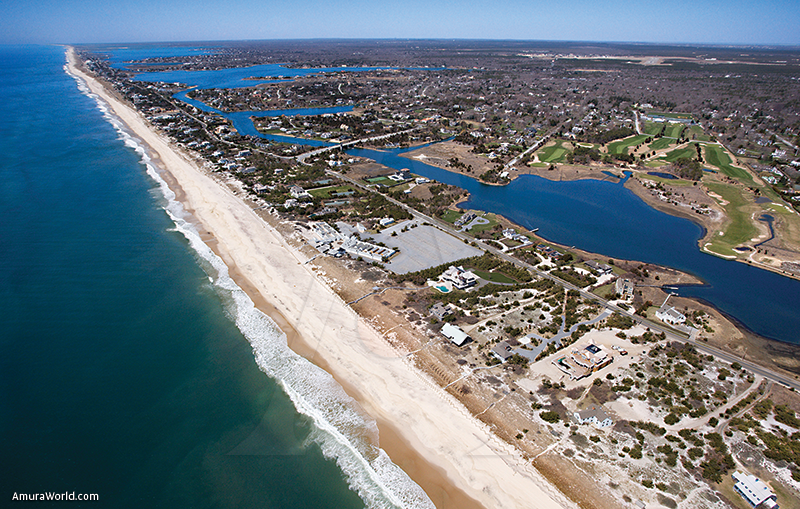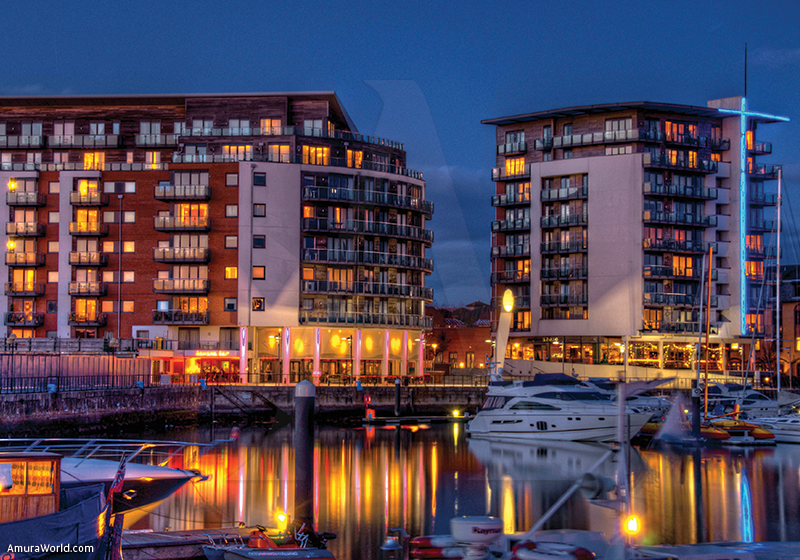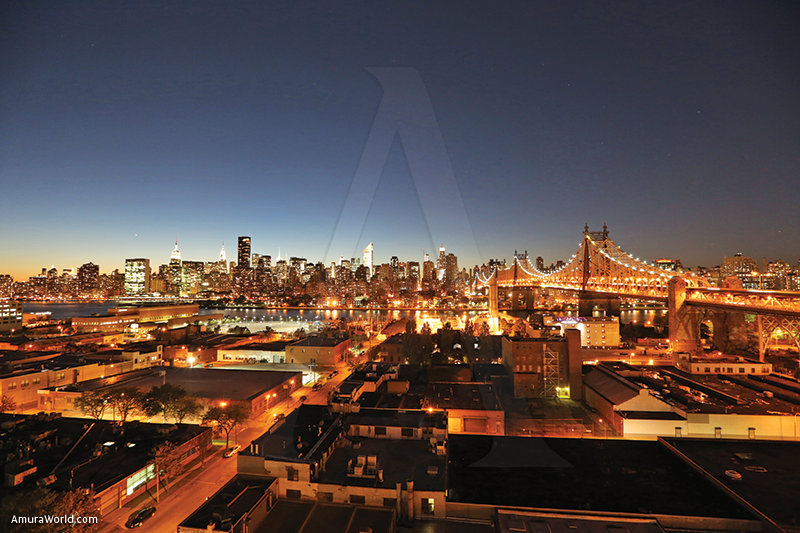A place that has it all
For most Mexicans, “the Hamptons” are a place that many have not even heard of, and even fewer have had the opportunity to visit. Even for those in the United States, most of what they know comes from TV, movies, and the latest celebrity gossip magazine. However, spending a week of vacation in this special community is the best way to find out more for yourself.
Day 1 – Traveling to the Hamptons
Located on the East End of Long Island “the Hamptons” are located nearly 100 miles east of New York City. If you are coming directly from Mexico, the best way of getting to the Hamptons is to fly to New York City’s JFK Airport, the closest international airport. From there you can take the Long Island Railroad (LIRR), the Hampton Jitney bus, or a car service. Expect this part of the trip to last two or three hours. The richest visitors, including second homeowners, also travel to the Hamptons by helicopter and land at either the helipad in Southampton Village, or at the small airports in East Hampton or Montauk. Traveling this way takes less than an hour.
However you decide to get there, the easiest and best way to see the Hamptons is by car. There is a public bus that stops in the center of each town on the South Fork of Long Island, such as Southampton, East Hampton, and Bridgehampton. However, the buses do not run at night, and they cannot take you to the beaches, near the mansions, or any other sites not located in a downtown area. And there are quite a few of these places as the Hamptons are spread out in a mostly rural area. There are several car service companies with which you can schedule a pickup, but they are expensive and not meant to be used several times per day. Usually they provide transportation to or from the bus stop, airport, or car rental business.
You will likely spend your entire first day traveling, so you will want to start early, and you can even break up the trip by spending a day or two in New York City. Alternatively, if you are already in the United States, there is also an airport in Islip, New York, about an hour west of the Hamptons, which hosts arrivals and departures of domestic commercial flights.
While there are no major hotel franchises in the area, the Hamptons does have a number of smaller privately-owned businesses that provide accommodations for both short and long term stays. They include hotels, motels, cottages, and bed-and-breakfasts. Private homes can also be rented for stays longer than two weeks, and summer rentals for June, July, and August are quite common among Hamptons visitors.
Day 2 - Beaches
If you haven’t already done a fair amount of research on things to do and places to see, one of your first stops should be the local Chamber of Commerce. Located in the downtown areas of Southampton, East Hampton, Sag Harbor, and Montauk, these organizations are helpful sources of information for maps, guidebooks, tours, and sometimes souvenirs. Comprised of local businesses, the Chamber of Commerce organization will also distribute directories of sellers of products and services you may need or want during your stay.
If you are here for a summer vacation, many visitors begin their day with a trip to the beach. Earlier is better because the beaches will become very crowed toward the mid to late morning, and often times will run out of day passes, which usually cost between $20 and $40 per car depending on the beach. If you drop the children off without parking, you do not have to pay for a pass.
Unlike many of the resort beaches in Mexico, Hamptons beaches do not have lounge chair or cabana rentals, or serving staff. However, all bathing beaches have restrooms and small un-enclosed showers for rinsing off saltwater. Only two beaches, Main Beach in East Hampton and Cooper’s Beach in Southampton, have concession stands. However, all the others have at least one truck that sells snacks, beverages, and ice cream.
Beachgoers can pick certain days to visit the sandy shores of the Hamptons, or they can go nearly every morning and then spend the rest of the day shopping, sight-seeing, or having a night on the town. Generally there are two types of beaches, depending on what type of water body you prefer. While the Hamptons are well-known for its ocean shoreline, the region is also home to numerous bay beaches that have smaller waves, fewer swimmers, and which are great for families. Some places, like Bridgehampton’s W. Scott Cameron beach, have access to both the Atlantic Ocean and Mecox Bay.
Regardless of which type you wish to visit, the best time to go is on weekday mornings. Some beaches do not sell visitor passes on the weekends, and going early will ensure a better parking spot and place on the sand. If you plan on staying for several weeks, or longer, it may be more cost-effective to buy a non-resident seasonal pass, which will allow you to access more beaches, and give you greater flexibility in choosing times to go. Another option is to ask your hotel whether they have seasonal passes available. These establishments will often purchase passes for the property, which guests can then borrow for the day.
Day 3 – Southampton
Since the Hamptons are spread across several communities, who visit for a short time here will get the most out of their visit by picking one place in which to spend the day, and then either heading to another, or returning to the area of your hotel or guest house, for any evening activities.
Whichever community your choose for your first visit, Southampton Village is the must-see community of the Hamptons. It has a bustling business district, quiet residential streets, beautiful parks, historic landmarks, fine dining, and elegant estates in the most exclusive neighborhoods along Meadow Lane and Gin Lane.
If you haven’t already done so, or you are staying at a hotel in the village, now is the time to visit Cooper’s Beach. Crowded on the weekends, it’s more manageable during weekdays. Otherwise, stop into the newly built and relocated Parrish Art Museum, which was founded in 1898, and houses a permanent showcase for the story of one of America’s most enduring and influential artists’ colonies.
Afterward, head into town for lunch where restaurants of every type abound. And if you’re not looking for a sit-down meal, order something to go at the Golden Pear Café, Job’s Lane Deli, or Paul’s Restaurant, and take it to Agawam Park for a lakeside picnic. Regardless, the park is the center piece of the village, with beautiful views of Lake Agawam, and is home to both Southampton’s war memorials and a playground for children. The green is also the setting for popular concerts on certain summer evenings.
After lunch, a stroll through the village shopping and sightseeing is an indispensible part of any trip to Southampton. Most everything is located along the streets that form a square comprised of Main Street, Jobs Lane, Hill Street, Windmill Lane, and Nugent Street. In tracing the route, you’ll find bakeries, ice cream parlors, a high-end cigar store, and many upscale boutiques selling clothing, furnishings, and other wares.
Another thing to keep in mind is that Southampton Village is rich in history. The oldest English settlement in the State of New York, Southampton was founded in 1640. The Southampton Historical Museum on Meeting House Lane and the Thomas Halsey Homestead on South Main Street will be your link to this fascinating past. And if you are interested in the time before the settlers arrived, make sure to visit the Shinnecock Nation Cultural Center and Museum. Related to the Algonquin peoples who arrived long before Christopher Columbus, the Shinnecocks are exceptional in the United States given that most still live on their ancestral land, rather than on a government-owned reservation. And because the museum and other shops are located on sovereign tribal land, many items, especially cigarettes, can be purchased tax-free.
To learn more about each of these places, and what else the village has to offer, stop by the Southampton Chamber of Commerce at 76 Main Street for further information.
Day 4 – East Hampton and Montauk
Though it doesn’t have as much history as a “summer colony” for America’s longest-standing wealthy families, East Hampton has been a popular seasonal destination for celebrities, second-homeowners, and what the French call, “nouveau riche” (new money). In addition to its many beaches, especially Main Beach south of the village, visitors flock to this easternmost “Hampton” for its trendy restaurants, multiple art galleries, and a far greater number of boutiques than can be found in Southampton.
Because of its much smaller size, expect the day spent in East Hampton Village to be a shorter one, unless you are planning to do a lot of shopping. Nearly all of the activity is concentrated along Newtown Road and Main Street (Montauk Highway), with a few additional shops and restaurants on North Main Street. If you finish sooner than you expected, and shopping isn’t your favorite thing to do, it’s only about 10 more miles to Montauk. Not only is it “the End,” the easternmost point in New York State, but it’s also home to the historic Montauk Lighthouse. Commissioned by the first U.S. President, George Washington, in 1792, the view of Long Island and the Atlantic Ocean from three sides makes the 110ft climb worth it. Do it toward the end of the day, and you’ll find Montauk’s nightlife awaiting you at the Sloppy Tuna, the Point Bar and Grill, and family friendly places like Puff n’ Putt miniature golf. On the way there, or back, the Lobster Roll on the Napeauge Stretch is a source of great seafood or other lunch or dinner fare.
The ideal day in East Hampton could take several forms, depending on where you are staying and what your interests are. If shopping is high on the “to do” list, a breakfast at Babette’s, the Golden Pear, or John Papa’s Café is the way to start. This can then be followed by popping in and out of stores in the vicinity, which primarily sell women’s clothing. There are others selling high-end men’s apparel, a surf shop, as well as those specializing in accessories and home décor. For those who are up for a little exploring, and have access to a car, it is easy to glimpse some of the area’s impressive homes along the ocean and bay. Just south of Montauk Highway, heading east along Dunemere and Further Lanes, you will also see the homes of celebrities such as Jerry Seinfeld, and the exclusive Madistone Club, one of the U.S.’s oldest private country clubs. Head west along Lily Pond Lane, Apaquogue Road, and Georgica Road, and you will be in the neighborhoods of present and past residents such as Jacqueline (Bouvier) Kennedy, Steven Speilberg, Calvin Klein, and former Pam-Am CEO Juan Trippe.
East Hampton can also be the place for a quite pleasant evening out. Whether you are capping off an afternoon of shopping, a day at the beach, or looking to wrap-up a day spent somewhere else, highly-rated restaurants include Nick & Toni’s, Cittanuova, East Hampton Grill, Rowdy Hall, the Palm, and 1770 House, to name a few. Further afield, just northeast of the village, one can find excellent water views at establishments such as Harbor Bistro and East Hampton Point along Three Mile Harbor Road. These eateries also serve lunch.
One can also begin or conclude the night by catching a show at Guild Hall’s John Drew Theater. Since its inception in 1931, the historic stage has hosted a veritable “who’s who” of 20th Century theatrical luminaries and continues to entertain audiences with a variety of year-round performances. In June, the theater will celebrate 42 years of dance and culture when it hosts Ballet Hispanico, one of the U.S.’s premier Latino dance organizations.
Day 5 – Bridgehampton and Water Mill
Despite their smaller size, Bridgehampton and Water Mill are also two very popular communities to visit during your stay in the Hamptons. Though you may have already seen them on the drive in, or during a visit to Mecox, Scott Cameron, or Flying Point beaches, both are worth your attention—even if it’s just to spend a little time browsing in the stores or stopping for a meal. World Pie serves food later than any other restaurant in the Hamptons, and Bobby Van’s across the street serves some of the best steaks in the nation. If it’s earlier in the day and you are just looking for a simple breakfast or lunch, don’t forget the Candy Kitchen.
In addition, both areas offer excellent opportunities to purchase antiques, home furnishings, and high-end clothing, as well as to see historic sites such as the Bebee Windmill and Militia Green on Ocean Road (Bridgehampton), and the Water Mill Museum. Built in 1644, the latter is home to New York State’s oldest water-powered grist mill. Children can attend a “milling session” and take home a free grain pouch.
Located a few miles apart, most of the activity in Bridgehampton and Water Mill is centered around Montauk Highway, which acts as the Main Street for both places. If it is the last day of your trip, and you still have not seen either, their convenient location makes it easy to stop on the way out of town. Even if you are taking the bus back to the airport, the Hampton Jitney has pickups in both locations.
In conclusion, while there is always more to do, and the Hamptons are a place to which people return again and again, an itinerary like this one will get you pretty close to “seeing it all.”
Text: Ryan Horn from the Tourist board of the Hamptons ± Photo: ENZO MR / THE PINNAAC / ROB SNEIDER / WPD / SOUTH FERT / NYC GO / BROWN HARRIS / J YUNG / CLARK V / SOUTH FERT / FLICKR


